
|
2007 into 2008
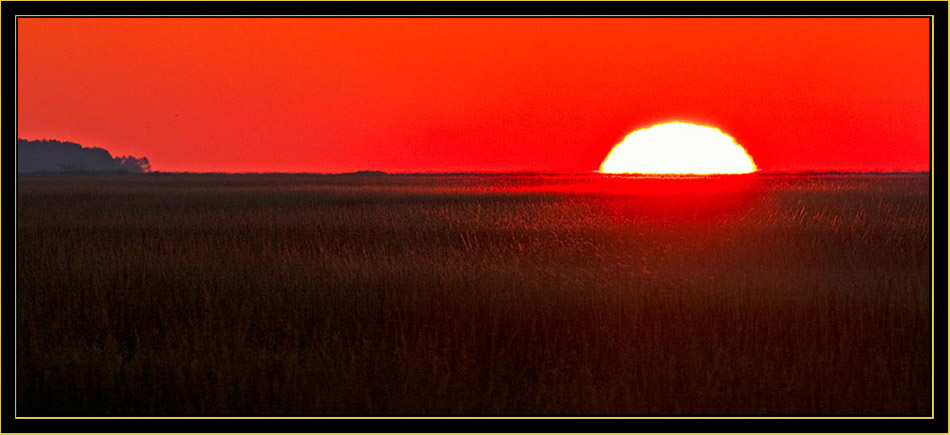
|

|
When British General & entrepreneur James Oglethorpe founded the colony of Georgia near Savannah in 1733,
Skidaway Island was occupied and to a small extent fortified. The English attempted to
settle the island but by 1740 the first unsuccessful farming efforts were abandoned due to the infertile soil. Between 1754 & 1771 grants of land on the island were issued to a new group of
settlers and they enjoyed greater success. One early grantee was John Milledge, who established a plantation named Modena, believed to be named for the Italian town that was the seat of the
silk culture, an early industry on the Georgia coast. The plantation survived until the mid 1800’s and the site is now occupied by the Skidaway Institute of Oceanography and University of
Georgia's Marine Extension Center. There is a historical marker denoting this fact located near the roadway at these facilities.
Skidaway Island was the site of a small skirmish during the Revolutionary War when a party of British Marines was found foraging on the island and driven off. Later, during the American Civil War, earthen breastworks and a battery were erected and occupied by the 4th Georgia Battery. I read this can be viewed from the Big Ferry Interpretive Trail at Skidaway Island State Park, but I’ve never investigated this – a task for a future visit perhaps. Like many of the outlying islands, the Union blockade was most effective and they were abandoned as untenable southern assets for the duration of the conflict and in some cases were occupied by Union forces. With the loss of the war and slavery abolished the area plantations fell into ruin. After the war in the days of the Carpetbaggers, former slaves assisted by the Freedman's Bureau and Benedictine monks occupied Skidaway Island. The Benedictines established a monastery and school for Negro children near Priests Landing on the eastern side of the island. I like this area, now very quiet and have visited often with photography in mind. In 1889 a tidal wave destroyed the fresh water supply causing farming efforts to fail and the island was again abandoned. In the days of prohibition Skidaway island was prime bootlegging territory due to its isolation. Remember, it is an island and in these days one couldn’t simply drive to it like you can now. Northern interests gained control of the island in the late nineteenth and early twentieth centuries. Union Camp, one of the larger firms, used the island for pulpwood production in the 1940’s. Still lacking vehicle access to the island, Union Camp offered the State of Georgia five hundred acres if they would construct a bridge. It wasn’t until 1971 that this construction took place and Union Camp subsequently developed the gated, residential golf community called The Landings, which today features six eighteen-hole golf courses. Now how’s that for a nutshell history... Most historical data excerpted from 'Longstreet Highroad Guide to the Georgia Coast & Okefenokee' - Richard J. Lenz |
|
I met many great folks on Skidaway Island and formed some lasting friendships. Most of these people live in The Landings including my longtime friends Bill & Rosalie Grotto and their
children William and Daniel. Because there aren’t any hotels in the immediate area, the Grotto’s were kind enough to have me as their guest often during my Georgia tenure. This kept me
on Skidaway and close to where I wished to be when out with my cameras.
Among other aspects of note, there is an active interest in birding and nature in general around The Landings and although I was simply a short-term visitor, was fortunate enough to interact with some really great and informed individuals during my time there. Three fellows I became quite friendly with due to our shared photography pursuit will appear in this article as we spent quite a bit of time together when we could arrange it. An Easter photograph I took of the Grotto family at home. Now you’re even more famous Billy-Bob!
|
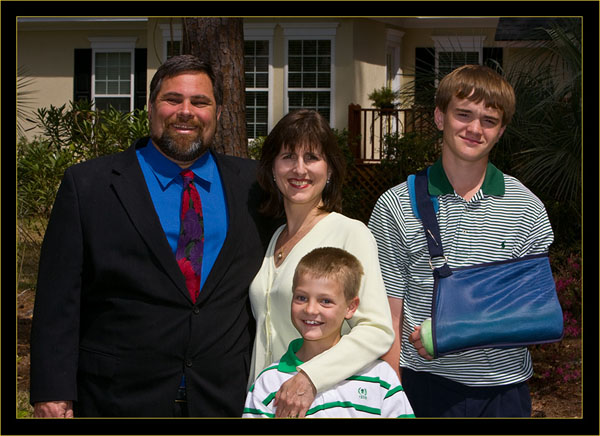
|

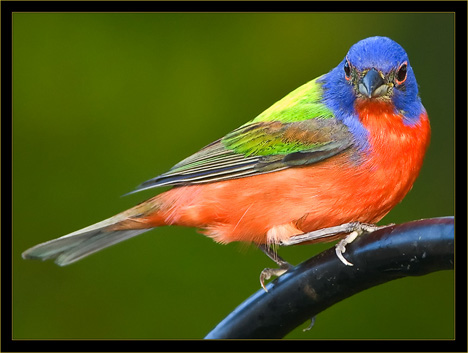
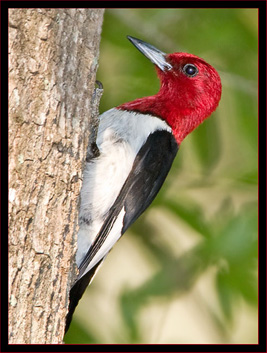
|
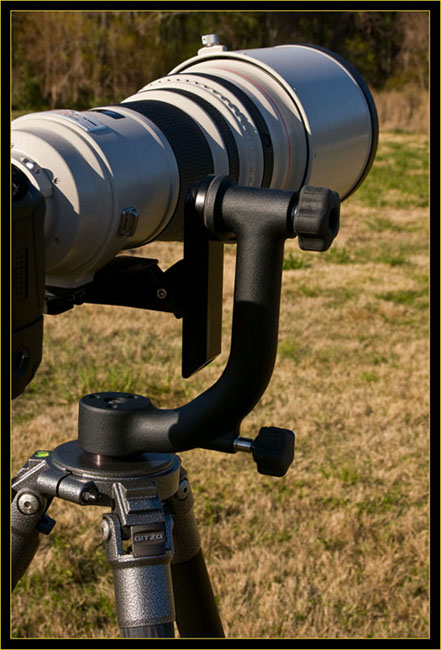
|
The images in this account were taken in the fall of 2007 through the winter and into spring of 2008. I returned to Skidaway in June of 2008 for a brief visit after being invited by Beth Roth to conduct a presentation,
‘Birding with a Lens’ to the
Savannah Ogeechee Audubon group and used whatever time I could muster to take the field with my friends, Fitz Clarke, Doug Herrick and Hunter Kennedy –
all residents of The Landings and excellent photographers & Diana Churchill, a master birder and photographer who resides on Tybee Island.
Photographing birds has been one of my primary interests in ‘daylight’ photography and when I first geared up in the digital age this pursuit was always paramount in my planning. Most of my time on the island was spent with my longer focal length lenses, my 500mm f/4L, (replaced with a 600mm f/4L lens in March of 2008) tripod mounted and 400mm f/5.6 lens on a second camera employed handheld while seeking birds. This set up is outstanding for this pursuit but does have a tendency to limit target opportunities. Not to say you cannot photograph anything you wish with whatever lens one may have mounted but when reviewing my files there were few landscape or other non-nature related shots from this truly beautiful area. About a week after I replaced my longest lens I had an opportunity to purchase Canon’s current flagship camera, The EOS 1Ds Mark III and had this in time for trials while still in the south. All my photography is conducted with Canon cameras. Once I purchased the 1DS this became my primary camera, mostly tripod mounted. Other cameras I own and used for exposures in this article include the EOS 5d, 40d and on one trip I had Linda’s 30d as a second camera. I won’t add much about equipment here and have an article posted, My Canon Photographic System, which details what equipment, lenses and accessories I employ in the field. This article will also provide a brief account of the loss of my 500mm f/4L lens, Canon 5d camera and 1.4X extender to the sea on Tybee Island during my time in Georgia. This was a costly debacle and an 'adventure' Doug and I shared... It was stated earlier that I took thousands of exposures in the timeframe noted while in Georgia. This is factual and my files contain over two thousand enhanced, final images after evaluation and culling from the files off the camera, although the overall group was taken in a variety of locations elsewhere in Georgia as well as Florida and South Carolina. Just so you’ll know I estimate my ‘exposed to keeper’ ratio for bird images at around 20% to 25%; the balance are deleted. I’m going to present a minute sampling of images taken on Skidaway Island so we can share some of the subjects I observed. These do not necessarily represent the best images of the subjects I’ve ever taken, but serve as a marker of my time on the island from the different months so appear in a rough chronological order. |
Birding with a lens on Skidaway Island...
|
This group of images commences in September of 2007. Ms. Diana and I spent some time together at Skidaway Island State Park and I returned to the area on multiple occasions. I was quite interested in
locating some Painted Buntings as these birds aren’t found in my home locale in Maine. When I was young I spent time in the summer at my grandfather’s place in the South Carolina Low Country and I remember
seeing these buntings around his fields. Having the opportunity to image in this area provided a venue to add some new species to my photographic life list so I was always on the look out...
Tufted Titmouse close up. 1/640 second, ISO 400 @700mm, f/8 with flash
|

|
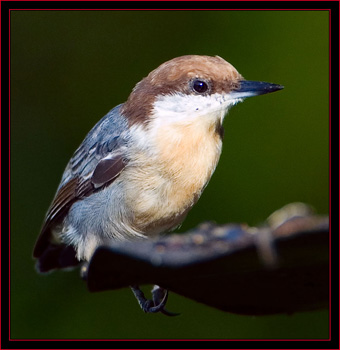


|



|

|
This female Ruby-throated Hummingbird was checking out the park feeders.
Except for an occasional rarity, Ruby-throats are our only eastern hummingbirds.
Canon 5d and 500mm f/4L lens extended to 700mm tripod mounted. 1/200 second @ f/5.6, ISO 400. |


|
|
A fine example of a Carolina Wren at Skidaway Island State Park.
Canon 5d/500mm lens extended to 700mm tripod mounted. 1/200 second @ f/10, ISO 400 with flash.
|

|

|
A Cooper’s Hawk near ‘the rookery’ at The Landings. This was taken with a Canon 30d, which I was using as my second camera at the time. 1/640 second @ ISO 800, f/5.6, 400mm f/5.6 lens handheld. |

|
|
It wasn't all just feathered subjects... September is definitely a great month for spiders and I viewed many examples of this Golden Silk Spider
in he woods and trails. This photograph was taken at Priests Landing.
Canon 5d/500mm lens extended to 700mm tripod mounted. 1/400 second @ f/8, ISO 400.
|

|
A brief digression...

|
This text is going to deviate from the Skidaway Island summary momentarily except for the images... During the course of a rehabilitation that was being conducted on a property our firm owns in Savannah in mid 2007 through early 2008 I’d lived in Pooler not far from the airport. This was a terrific advantage as it was close to the Savannah National Wildlife Refuge, a facility dear to my heart – I have multiple photojournals posted on my website of photographs from this place. I spent many hours in the refuge and obtained some great photographs of the inhabitants. I joined Ms. Diana and others from the local Audubon chapters at the refuge on several occasions and one of these field trips was my first introduction to a fine fellow that I became quite friendly with, Mr. Fitz Clarke, who resides in The Landings. We talked and hung out a bit at this initial meeting and discussed digital camera work among other topics as we looked for birds. Little did I know at the time we would become actively engaged later in our shared photographic pursuits. |
|
Fitz was doing digital capture with a Canon Rebel when I first met him and it didn’t take long in our conversation for me to realize he wished to push the envelop a bit photographically
speaking and was seeking to upgrade as his skill set improved. I don’t claim to know much about anything, but like my astronomy pursuits, I can clearly indicate what works and what doesn’t
from personal experience and it didn’t take long before Fitz and I were fully engaged in an equipment discussion. After our morning in the refuge I didn’t see Fitz again for multiple weeks.
A Yellow-crowned Night-Heron photographed at Priests Landing.
Canon 5d/500mm lens extended to 700mm tripod mounted. 1/20 second @ f/8, ISO 800
|

|

|
One Saturday morning while I was still living in Pooler I decided to take a ride through the refuge to see what may be going on – this was a near daily occurrence as my schedule permitted in any event.
By coincidence, Ms. Diana was there along with a large Audubon group which consisted of many vehicles on the wildlife drive. As I drove past a lagoon I viewed Fitz, camera on tripod, imaging around
the water. I rolled down my window and we spoke. He recognized me immediately and I decided to park and pull my tripod out so we could take some shots together. Fitz had traveled with another
photographer as both reside in The Landings. Quickly enough he introduced his friend, Doug Herrick and the three of us talked camera equipment the balance of the morning as we looked for birds.
Doug was interested in my equipment and had read about the Wimberley Sidekick I was using and was checking out my 500mm lens. I truly enjoyed the company of these guys and asked if after the
field excursion was ended, if they’d join me for lunch. They decided they had time and we’ve been good friends ever since. We’ve shared a lot of time behind the lens together since that luncheon
and I consider both my photographic peers.
A Blue Jay in transition. Canon 5d/500mm lens extended to 700mm tripod mounted. 1/125 second @ f/5.6, ISO 400 with flash |
|
I learned that Doug & Fitz live on Skidaway Island at The Landings. Fitz isn’t located too far from my friend Bill’s house and I thought all of this was a bit of a coincidence.
When I returned to the area I talked with Bill about staying with him because the upcoming trips would be of shorter duration. As it turned out I ended up in Georgia longer than
anticipated and Fitz, Doug and I were able to do many activities together as time permitted. Besides actual field time with the cameras we spent hours on the computer enhancing images and
discussing techniques using Photoshop, PS plug-ins and other programs. As I write this in August 2008, we remain in contact either by phone or email quite often. And I’m pleased with our association...
Garter Snake photographed near the Sparrow Field at The Landings.
|
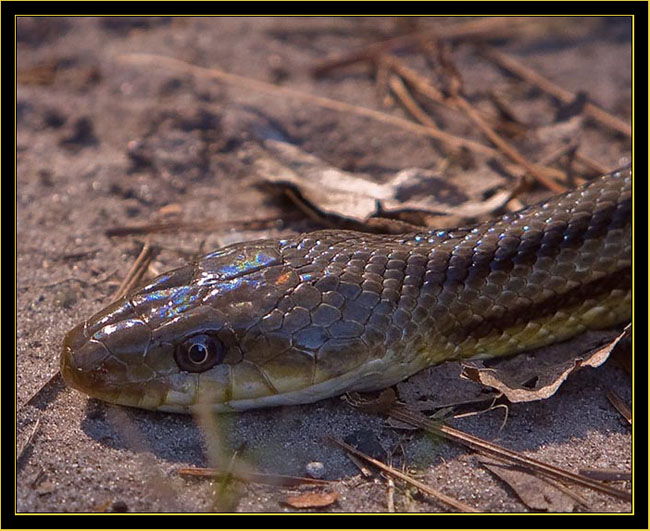
|

|
During the time I was in Georgia in January and February ‘08 I stayed in Pooler, about thirty miles from The Landings but really close to the Savannah National Wildlife Refuge.
After returning to Maine for a time,
in March I returned to the
Savannah area and based myself out of Skidaway Island. Much of my camera field time was spent between the island and work related trips to Florida. This was an active and productive
period both for work tasks and photography pursuits...
I observed the heron at left for over two hours while sitting nearly motionless behind my tripod. The bird was fishing at a lagoon near the Sparrow Field at The Landings and worked around the water’s edge coming closer & closer to my set up allowing for some detailed shots. The last image in this group was just within focus range of my lens at 700mm. It's great when one has time to allow the scene to unfold and not have the worry of moving on for whatever reason. Green Heron's are one of my favorite birds. Green Heron Canon 5d/500mm lens extended to 700mm tripod mounted. 1/50 second @ f/5.6, ISO 400 with flash |
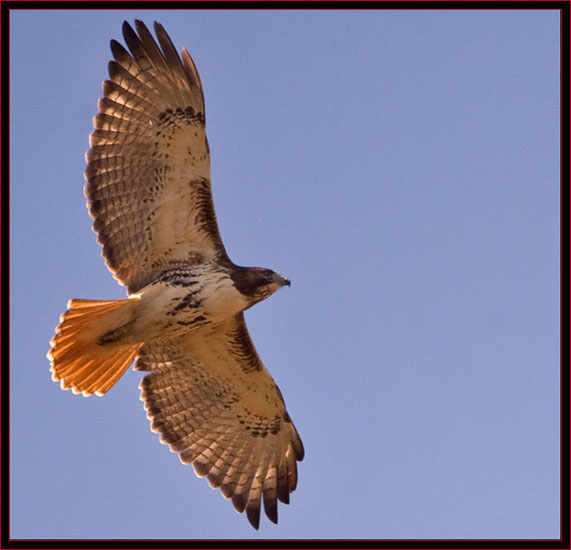
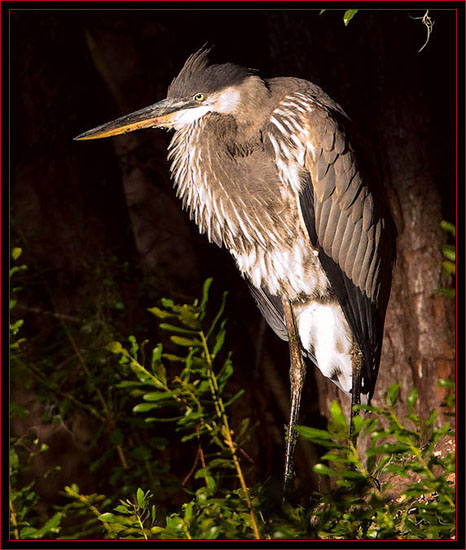
|
|
One thing I do remember in detail about this time of year however is being tormented by sand gnats... Yikes – I thought Maine was nasty during Black Fly season, which it is, but these little
gnats apparently loved me and before long I was a scratched up mess. I’d have been happy to have slapped some Black Flies compared to this torture. Doug, having relocated from Massachusetts
and an avid golfer so often outdoors, explained to me that you’d get accustomed to these gnats or you should simply 'ignore them'. Right Doug... ignoring them in my view would be the equivalent
to ignoring an IRS meeting if one failed to file income taxes for the past five years... There were only a few trips outside that became intolerable to the point that I/we had to give it up
though. Just more 'suffering for art'...
Cedar Waxwing Group.
Canon 40d/400mm lens handheld. 1/500 second @ f/8, ISO 400
|

|
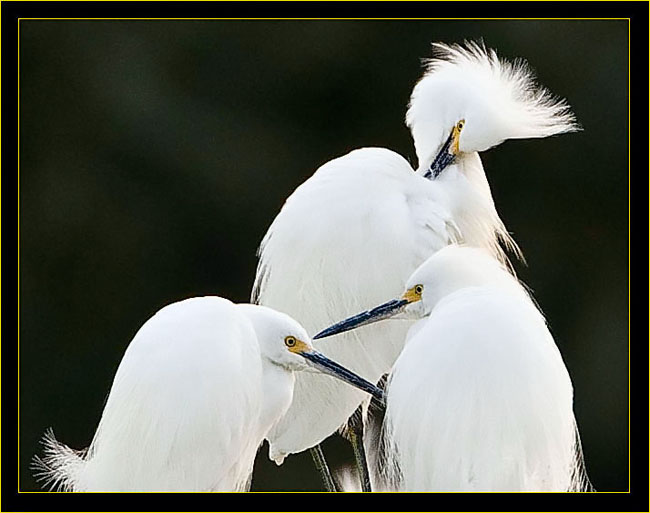
|
But My-Oh-My – Georgia in the wintertime... It’s like summer in Maine. All kinds of birds and spring like activities are underway; the island was alive with commotion with always something going on.
I learned where the bluebirds, other perching birds and many wading birds winter – there were many around this time of year. I especially enjoyed this as Wood Storks, Yellow-crowned Night-Herons,
Anhingas, etc, would be most unusual or rarities near my home location. Finding new subjects to photograph wasn’t as simple though. Once you had the lay of the land you could determine where to go depending on
what you choose to image. There are always rarities and migrants stopping around and the folks on the island had a good contact system to keep all informed about new or unusual sightings.
Summertime in the Low Country is an entirely different ballgame... If you don’t like it hot, I mean gateway to Hades hot in my view, you may not appreciate late spring to early fall. I think the Low Country in general and The Landings in particular is an exceptional place for many reasons but it would be a stretch for me to say I’d like to live there during the warmer months. One can acclimate to anyplace given enough time I suppose and I have plenty of life ahead of me, at least I hope that is, so I’ll just have to wait and see what transpires... Snowy Egrets at Priests Landing. Canon 5d/500mm lens extended to 700mm tripod mounted. 1/320 second @ f/8, ISO 640 |
Priests Landing views
Thick vegation nearly precludes seeing the water in the image directly below. There's a trail running along the righthand side of this view with good observation points to check for birds and other wildlife in and around the water. This area is fairly quiet and I was often on this trail with nobody else around. The second photograph is looking over the open water towards Wilmington Island.
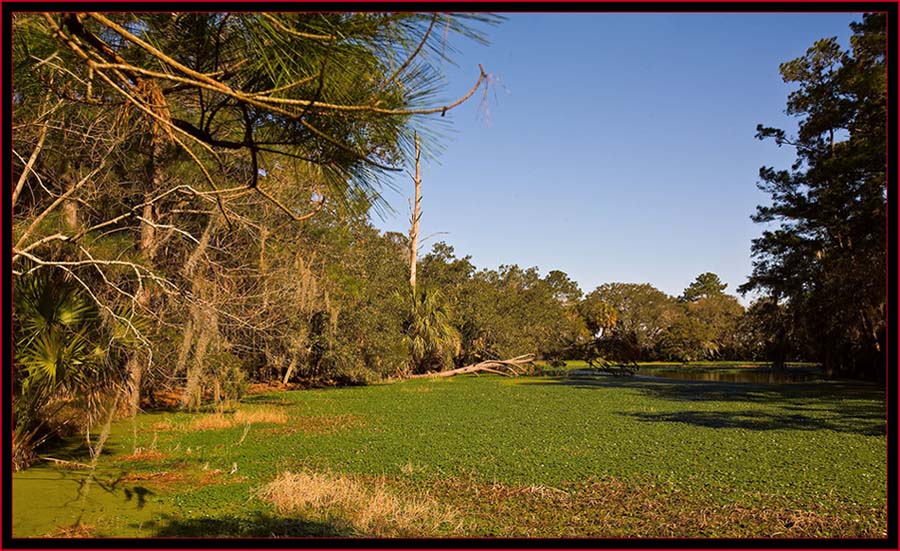
|
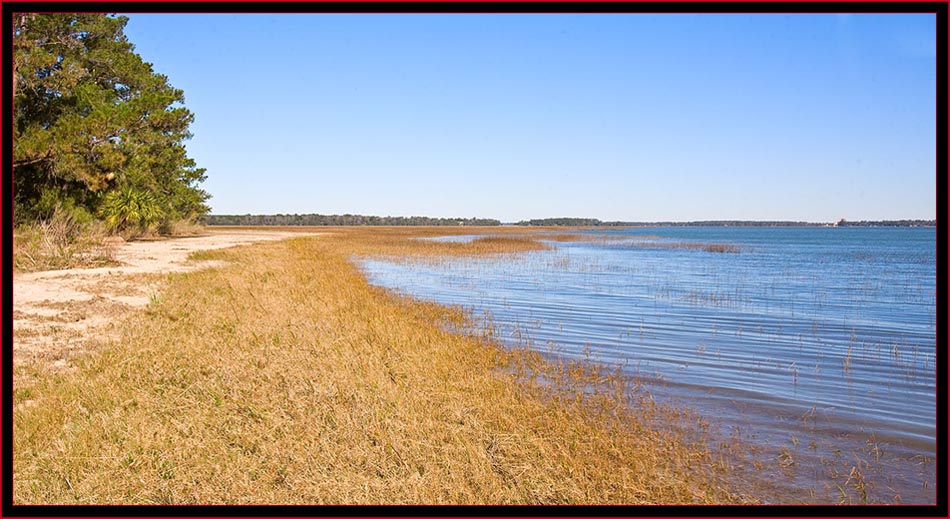
|
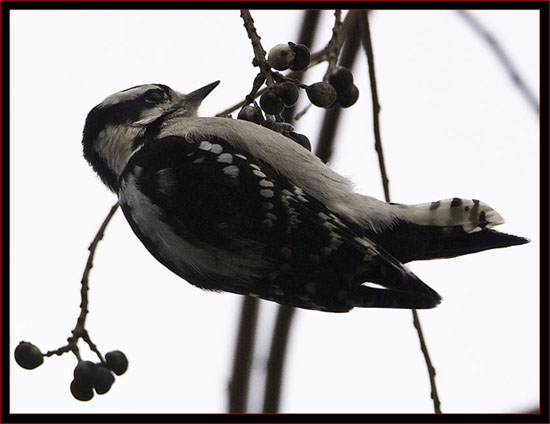
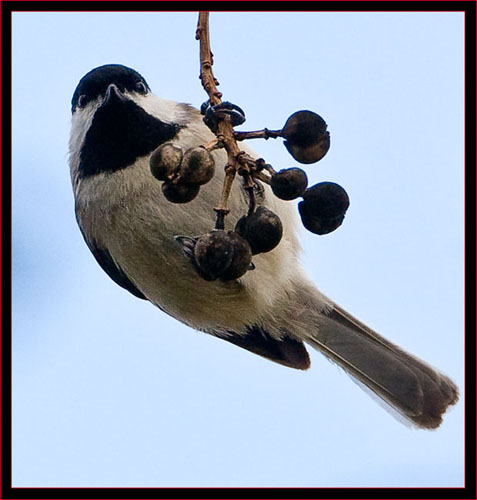
|
Below - A Downy Woodpecker & Carolina Chikadee berry picking.
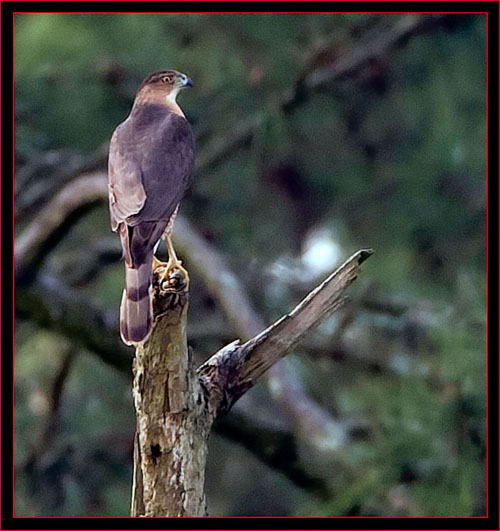
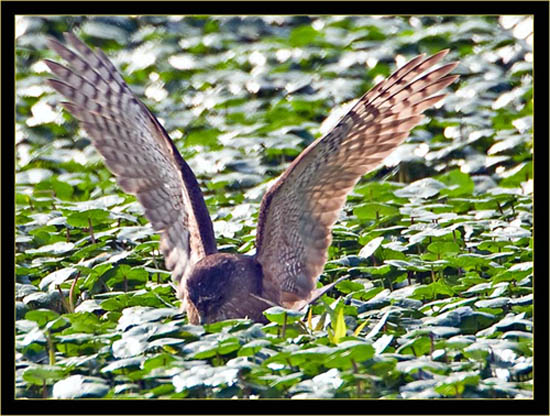
|
|
I didn’t spend a great deal of time on Skidaway Island in early 2008 but was over there on occasion to visit Billy or my other friends. I always had my camera equipment with me and missed few
opportunities to get out when I could. Fitz and I got out together some, often joined by Doug when his golfing activities allowed time. As I was to learn in far greater detail later during my time around The Landings,
the transportation preference of choice is via golf cart because you can get into places other vehicles cannot. So, Fitz and I often ‘patrolled’ the grounds in his golf cart with the camera gear aboard.
He often had a destination in mind but at times we just explored to learn what we could find as he checked out various places.
I developed a love/hate relationship with this method of transport. I didn’t mind being in the cart or anything but you really needed to think about what may be required for any particular task predicated upon what you’d like to image. I don’t like going anywhere without my long lenses but if planning on doing some close up work I would probably choose to re-gear. My preference is to have everything with me so if a photographic opportunity should arise all my options are open as to selection of lenses, camera, support gear or accessories. My ‘golf cart’ is my pick up truck – I can carry everything at once, it serves well as a blind when conditions permit and with the tailgate dropped you have a ready made work station. When walking a trail or whatever obviously you carry what you need into the field but no matter what your oversized ‘camera bag’ is never too far away... Oyster Clump - Canon 5d/500mm lens extended to 700mm on tripod; 1/125 second @ f/16, ISO 400
|
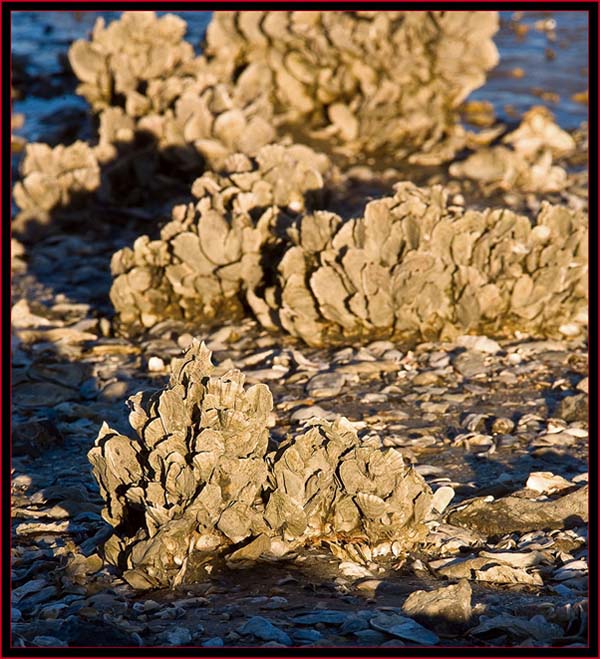
|
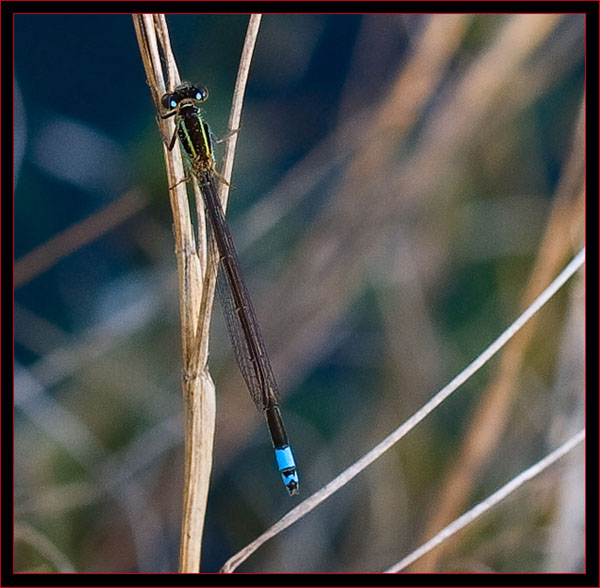
|
I suppose this is as good a time as any to point out that around this time our friend Fitz was becoming a butterfly/dragonfly/damselfly aficionado extraordinaire. I believe he always
had an avid interest in imaging insects & macro work – we all do to some degree, but it appeared that Fitz was taking this well beyond to the point of the task becoming his primary goal
photographically. Several events spurred the transition to greatness that Fitz enjoys today. After many discussions and much research in February of 2007 he purchased a Canon EOS 40d, a
subframe, 10 Megapixel sensor camera using Canon’s newer processor technology and autofocus system. The second was his acquisition of Canon’s vaunted EF 180mm f/3.5L USM Macro Lens
about a month later. The 40d has a live view function that allows a magnification boost to aid manual focus; this combined with a Hoodman Loupe, 180mm macro lens and his support
system created a killer combination. In the timeframe that I’ve had the pleasure to know Fitz he is by far the most improved photographer in my experience - his skill set and image
quality has improved significantly. Unfortunately, he doesn’t yet have a website so his work cannot be linked and viewed by all from this article.
Male Ramburs Forktail (Damselfly) - Canon 5d/100mm f/2.8 macro lens tripod mounted. 1/80 second @ f/6.3, ISO 400 |
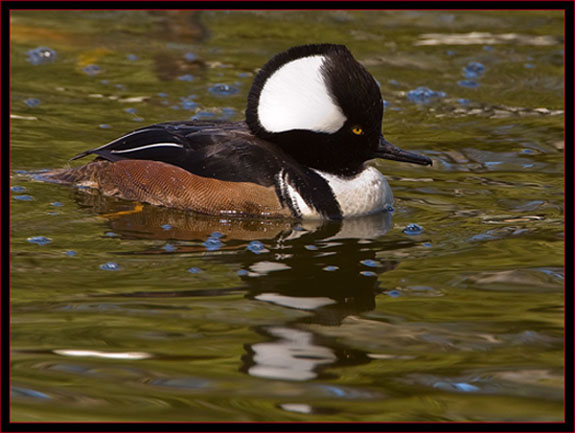
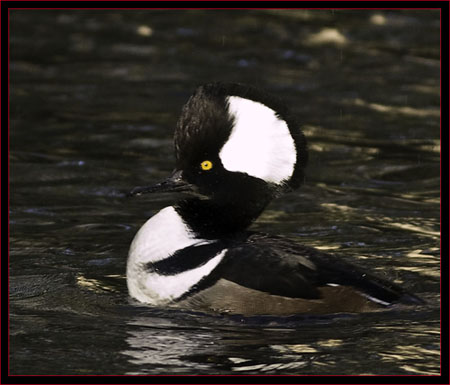
|
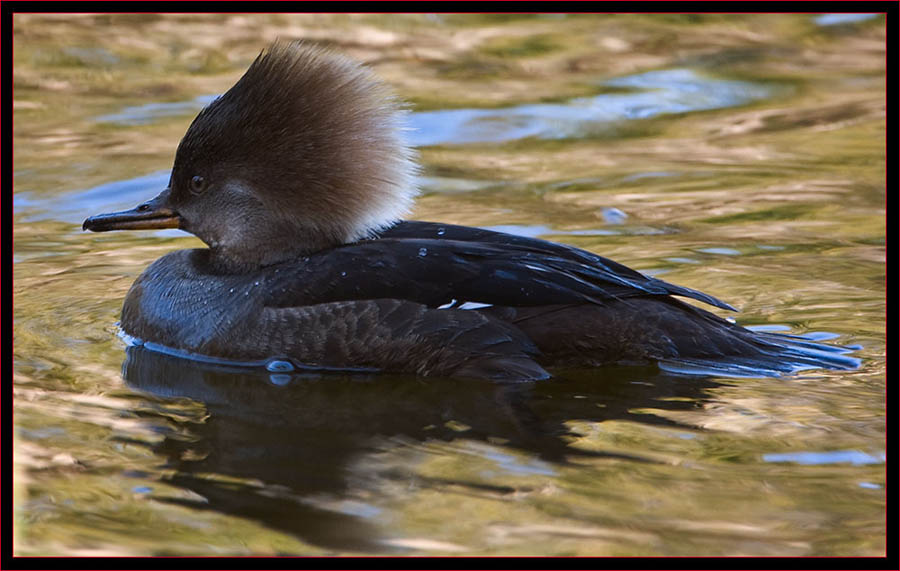
|

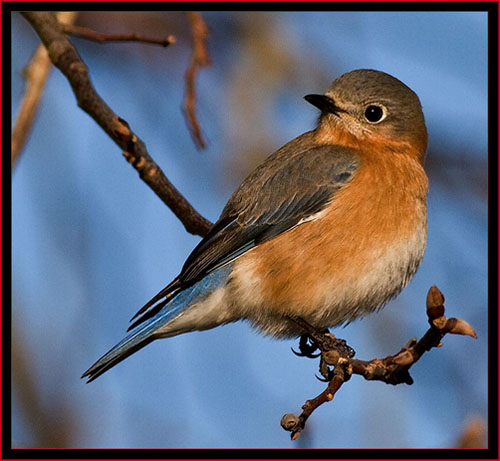
|
March into April 2008
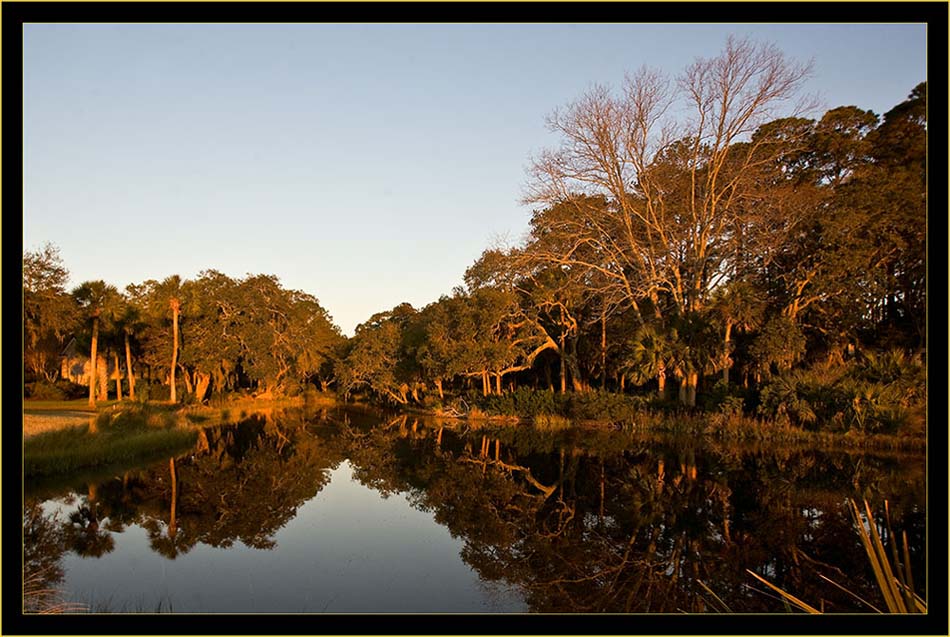
|
|
I remained in Georgia and/or Florida all of March into early April and took advantage of most of my non-working or sleeping hours to get out with my cameras. I did other things
obviously but investigating the areas I visited photographically was an ingrained portion of my living routine. March was an eventful month for me on several fronts. As stated earlier,
in mid-March my primary system was struck by a wave while Doug and I were on the beach at Tybee Island and was deemed a total loss. This had the immediate result of imaging with my
secondary system, a 400mm f/5.6L lens and subframe 40d camera, purchased in October 2007, or replacing what I’d been using. I ordered another 5d camera and upgraded to a Canon EF
600mm f/4L lens and Gitzo GT5530S CF Tripod within a week. Shortly afterwards I had an opportunity to obtain Canon’s flagship camera, the EOS 1Ds Mark III and did so. You can trust
when I indicate I’m not close to being wealthy and these purchases weren’t conducted on a whim. However, I couldn’t bring myself to not replace the equipment and my thinking at
the time was if need be I’d sell some astronomy optics to cover the expenditures...
Bald Eagle - Canon 5d/500mm extended to 700mm; 1/800 second @ f/8, ISO 200
|
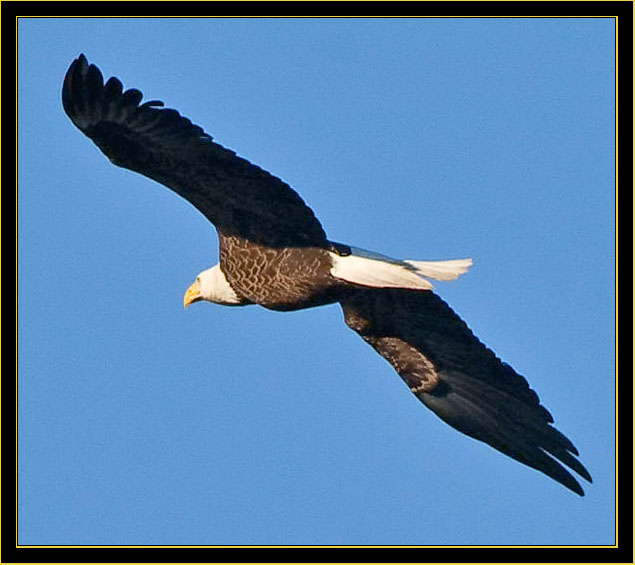
|

|
When I was back in Maine Fitz and Doug kept me informed on the goings on around the island. They’d been checking ‘the rookery’ and viewed the mating activities underway with some of the
birds that frequent this spot, notably Great Egrets, Wood Storks, Anhingas, etc. There’s also a population of Black-crowned Night-Herons, Double-crested Cormorants and a few other species
in the mix. When I viewed what my friends had been shooting I was eager to return to capture some images. Great Egrets are a common wader; although always beautiful in mating season
their lore’s become an intriguing lime green color and their feathers are primed and looking great – it was that time of year.
The rookery consists of a small island in the middle of a lagoon in The Landings. The lagoon is ringed with some beautiful homes and there are a few areas around the enclosed water where you can set up without become a nuisance to the people that live in the area. In the right vantage point and time of day it’s a wonderful place to image birds flying, nesting, roosting, feeding, etc. It’s fun, good practice and one never knows what the birds may be up to next. The egrets were flying around with branches – nest building material to attract a mate. The following series of photographs where obtained from visits to this location. Wood Duck at Priests Landing - Canon 40d/400mm f/5.6L handheld; 1/1000 second @ f/8, ISO 400 |
Imaging at 'The Rookery' - The Landings on Skidaway Island
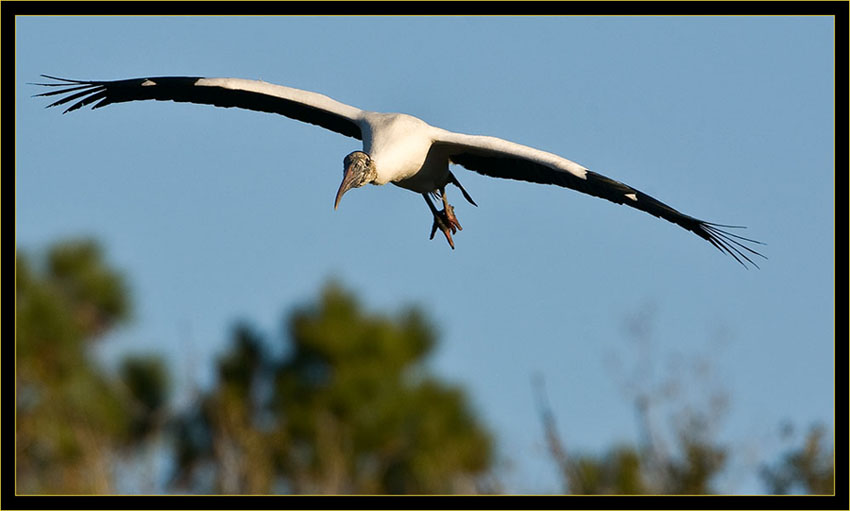
|
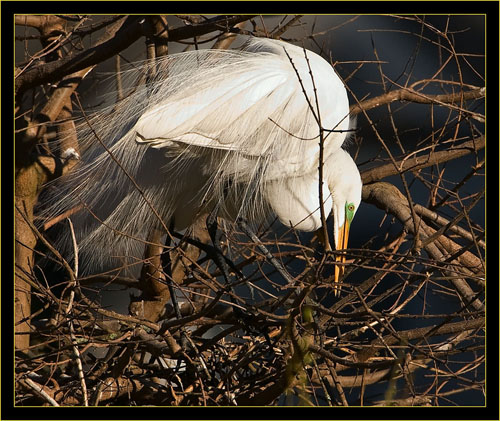
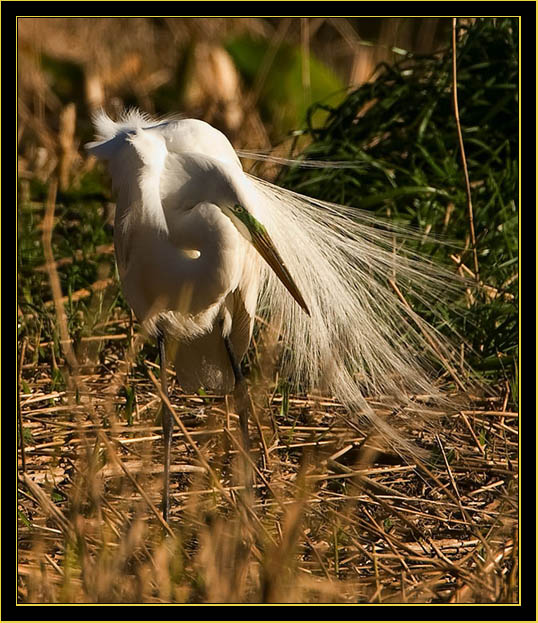
|
Left - Canon 40d/400mm f/5.6L lens handheld; 1/640 second @ f/8, ISO 400; Right - Canon 5d/600mm lens extended to 840mm on tripod; 1/400 second @ f/8, ISO 640
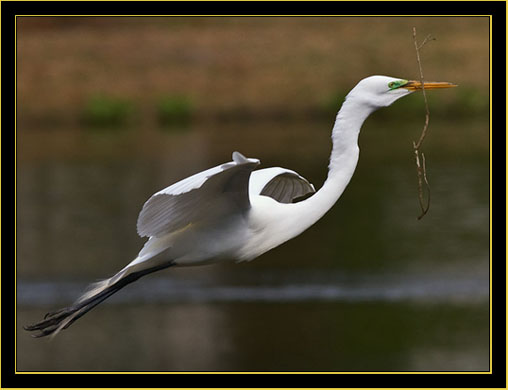
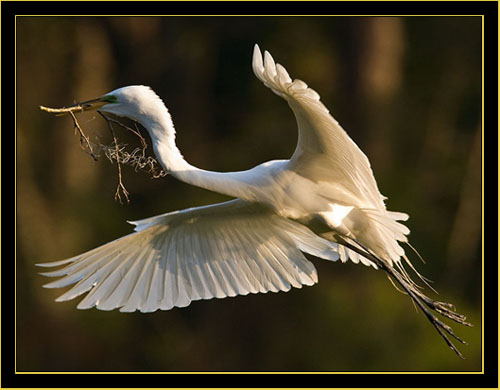
|
Left - Canon 5d/600mm lens extended to 840mm on tripod; 1/1250 second @ f/8, ISO 640; Right - Canon 40d/400mm f/5.6L lens handheld; 1/4000 second @ f/6.3, ISO 400
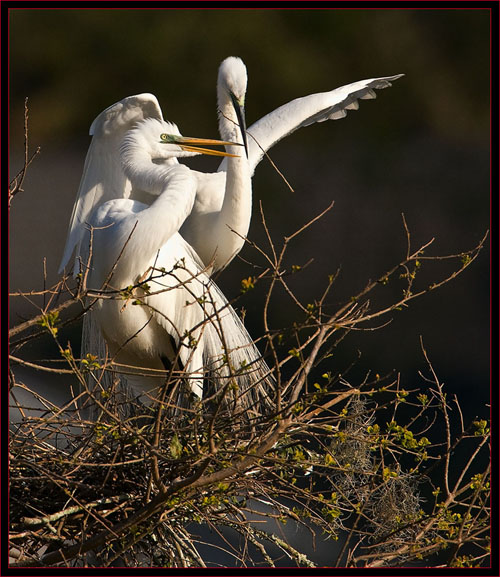
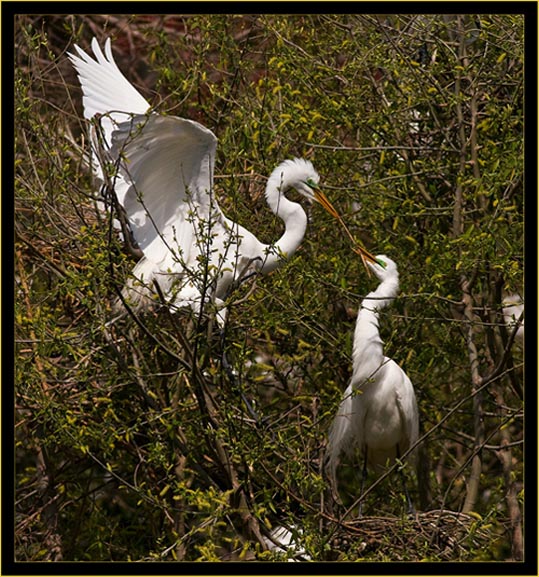
|

|
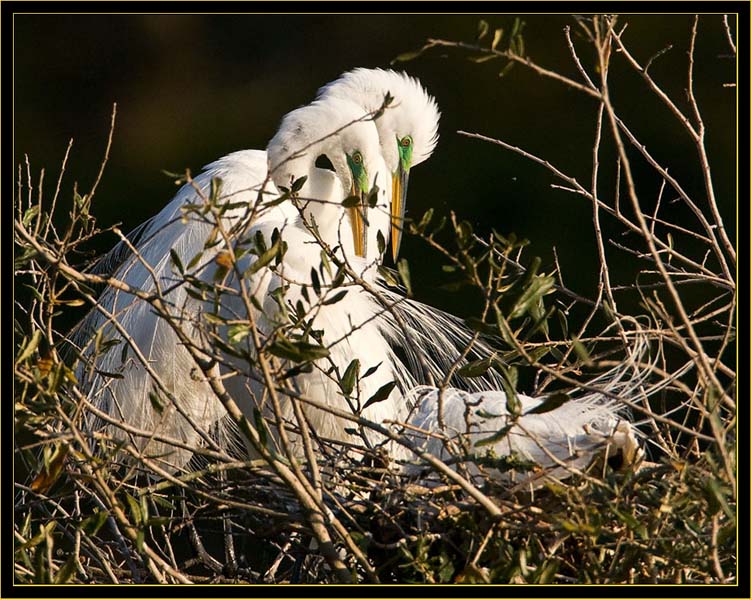
|
|
As indicated previously the rookery is a nesting site for Great Egrets but there were many other species represented in the times I visited. Please find below a potpourri of
some of the other birds photographed from this active location.
Great Egret in breeding plumage - Canon 5d/500mm lens extended to 700mm on tripod; 1/640 second @ f/8, ISO 400
|
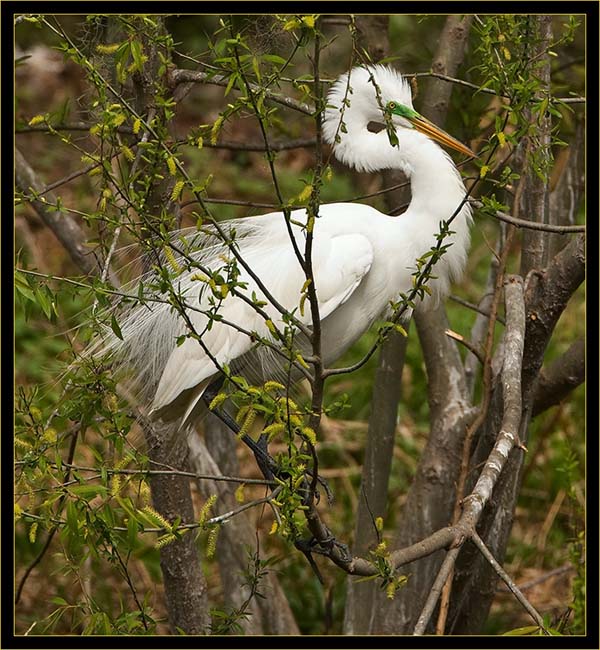
|
Both images Canon 5d/500mm lens extended to 700mm on tripod; 1/1250 second @ f/8, ISO 400
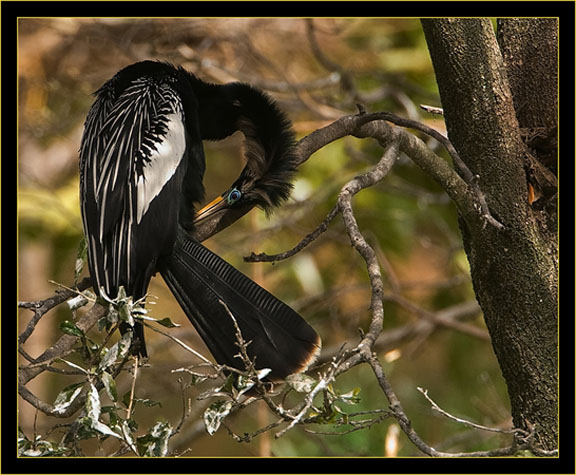
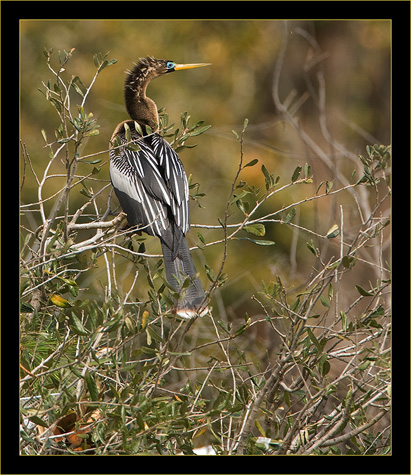
|
Left - Canon 40d/400mm f/5.6L lens handheld; 1/250 second @ f/8, ISO 400; Right - Canon 5d/500mm lens extended to 700mm on tripod; 1/250 second @ f/8, ISO 400
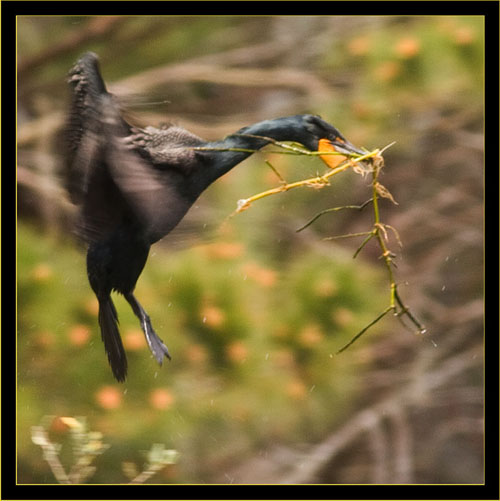
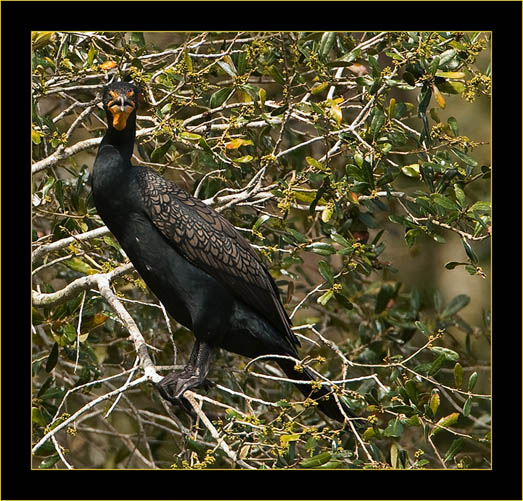
|
Canon 5d/600mm lens extended to 840mm on tripod; 1/640 second @ f/8, ISO 640

|
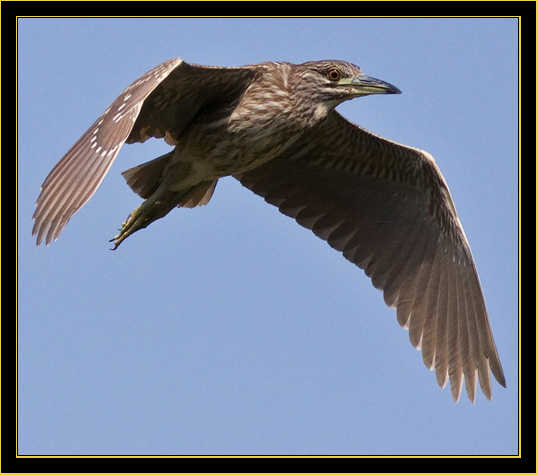
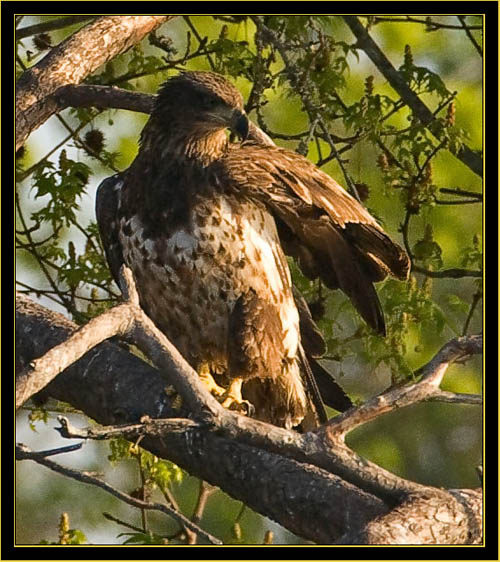
|
Canon 40d/400mm f/5.6L lens handheld; 1/640 second @ f/9, ISO 640
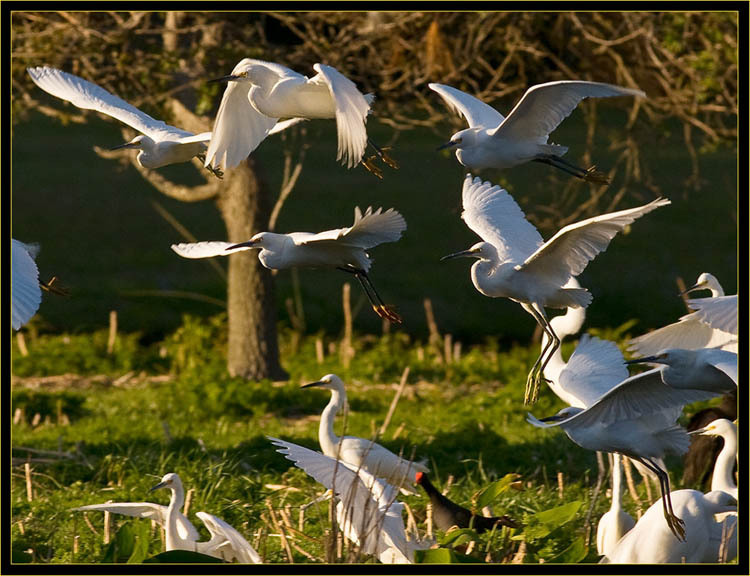
|
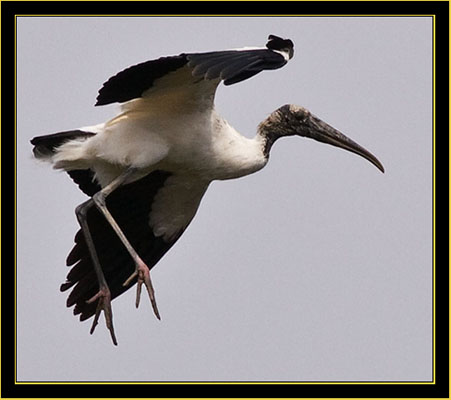

|
Canon 40d/400mm f/5.6L lens handheld; 1/1600 second @ f/8, ISO 640
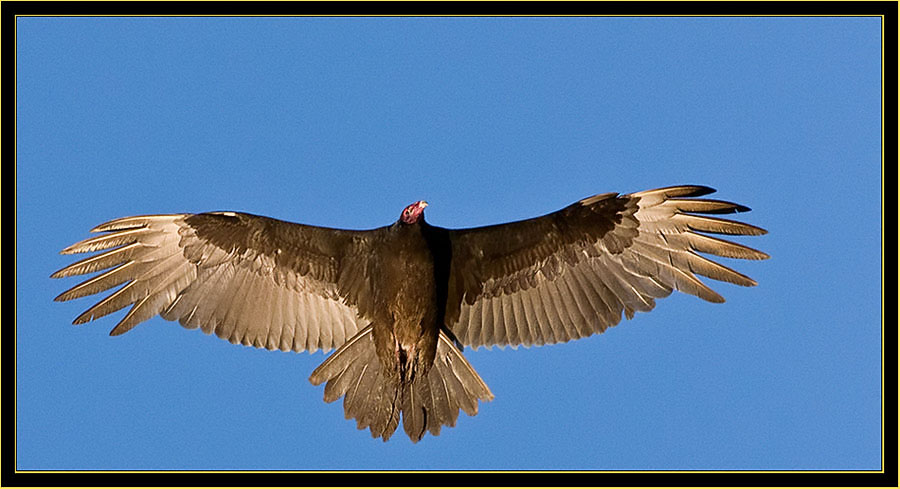
|
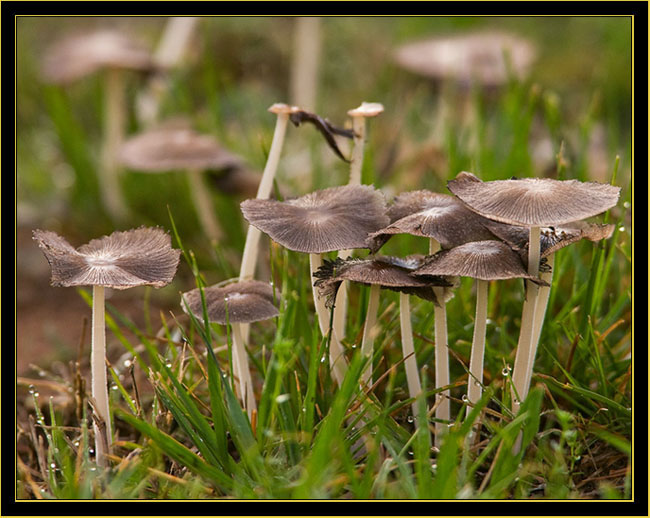
|
When I made the return trip to Georgia in March I carried a group of photographic prints from earlier in the year taken at the Savannah National Wildlife Refuge (SNWR). I’d produced an article of shots from my many trips through the refuge, In the Refuge – Photographs from the Savannah National Wildlife Refuge, which came to the attention of Patricia Metz, Supervisory Ranger for the seven facilities her group manages and was well received. We’d been in contact and she wished to meet me when I got back in the area. In the end result we did meet and Doug, Fitz and I traveled to their offices to meet with her and Russell Webb, the facilities biologist in mid-March. They were planning construction of a new Visitors Center and Pat indicated our meeting could not have been timelier. One task related to the new center was to produce an introductory film presentation about the facilities and she was in need of some good nature shots for this effort. Besides providing some high resolution images from my archives, she also asked if I would consider doing some photographic missions with specific views in mind. I indicated this was fine and I was provided a key and free reign to the various facilities although I had little time this trip to avail myself of the opportunity. I completed the endeavor and provided Pat with the shots she was seeking. I learned quickly enough that Pat has a good eye and is particularly critical about what she'll accept and would select for the final views. Twelve or fifteen of my images were selected for the presentation. I was pleased with this as Pat indicated my shots exceeded her expectation of quality in every way. It's nice to hear comments of this nature... I was also pleased to learn that Pat had several of my prints matted/framed and ready to hang in the new facility. |
|
Fitz had become an insect seeking machine by this time and was dedicating most of his field time in pursuit of whatever dragon or damselfly may be flying at that particular time.
I must admit his study and growing knowledge of these creatures and his dedication is impressive. Doug and I discussed this and I believe he was concerned that I too
would waiver and be lost to the world of insect macro work causing a cessation of bird and other photographic endeavors. As if... However, I am intrigued by this type of macro
work and was reasonably well equipped for this pursuit having taken multiple up close shots of many subjects since I commenced shooting in daylight.
Fitz and I discussed equipment choices often and I recommended the Canon EF 180mm f/3.5L Macro Lens without equivocation – although I don’t own one I always planned to and have researched this in detail. I believe the working distance, sharpness and overall capabilities of this professional ‘L’ series lens are outstanding and his efforts once employing this lens, have certainly proven the case. He has thanked me for this on several occasions and his abilities using this lens continue to improve along with his insect knowledge. Nowadays we simply refer to Fitz as the ‘Bug Man of Skidaway Island’... I think he’s found a new life’s calling in retirement. Remains of a dragonfly emergence - Common Baskettail exuviae
Canon 5d/70~200mm lens with 12mm extension tube; 1/50 second @ f/11, ISO 400 |
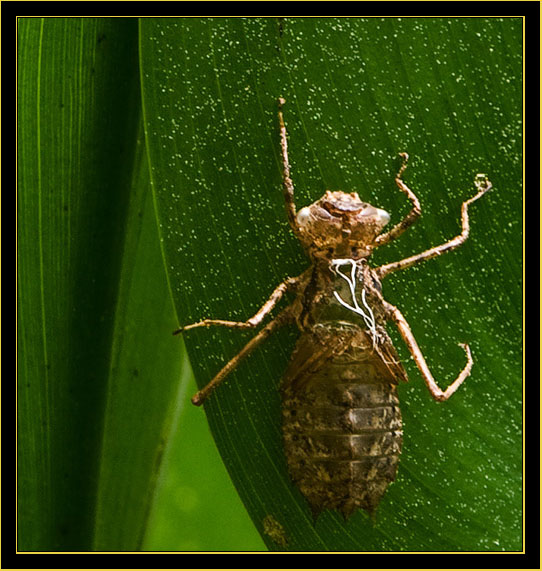
|
This images was taken with the 40d at f/16 using the same lens set up as noted in the image above.
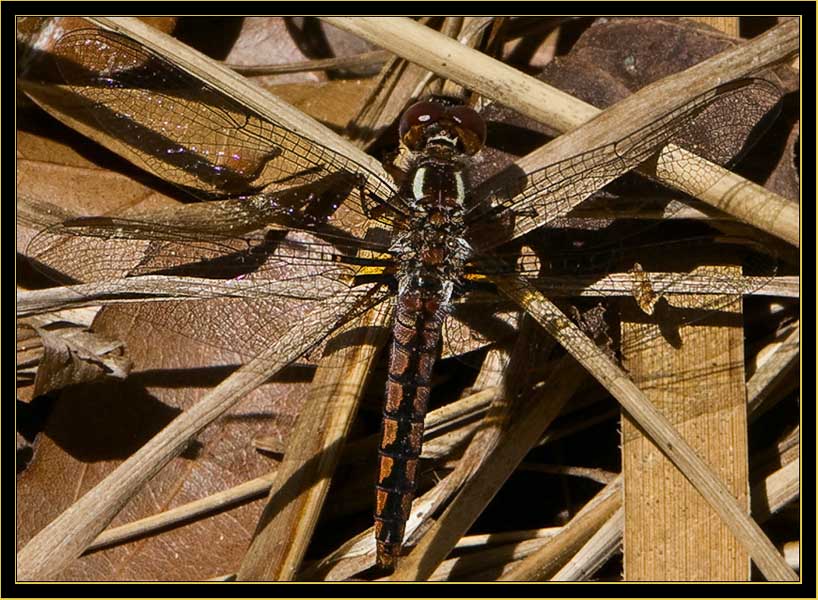
|
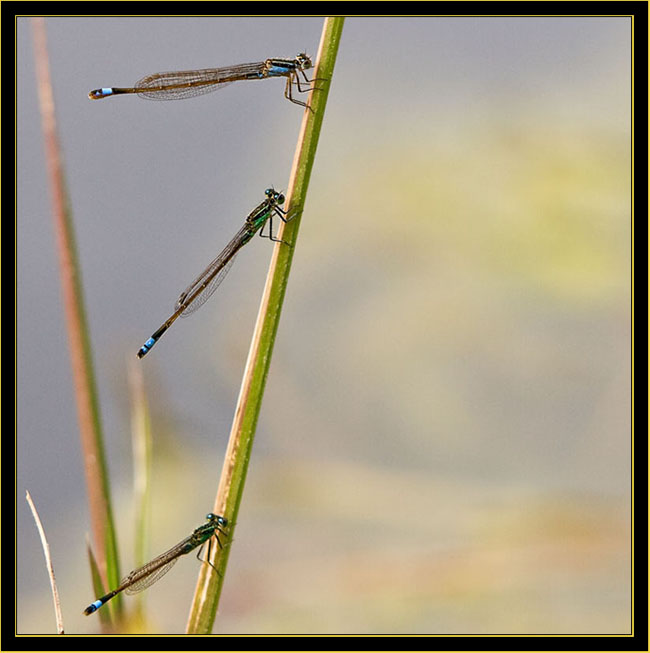
|
One Tuesday after work Fitz and I loaded up his golf cart, or I should say I loaded my gear onto his golf cart – he keeps his camera equipment stored on it as he goes out so often and we went in search of damselflies. This wasn’t my first time photographing these but it was the first trip where the goal was to find these specifically. A few days before this Doug, Fitz and I were joined by another fellow from The Landings, Art Greene, and we went out with the cameras. Although we were birding, Fitz found some damselflies and that became his point of interest. I learned quickly enough that shooting small damselflies at 700mm is no simple task. By the time I backed up enough to get within the minimum focus distance, perhaps twelve or fifteen feet with the lens extended, locating the tiny subject visually to train the lens and achieve focus was problematic. This type of shooting needs to be up close and personal. |
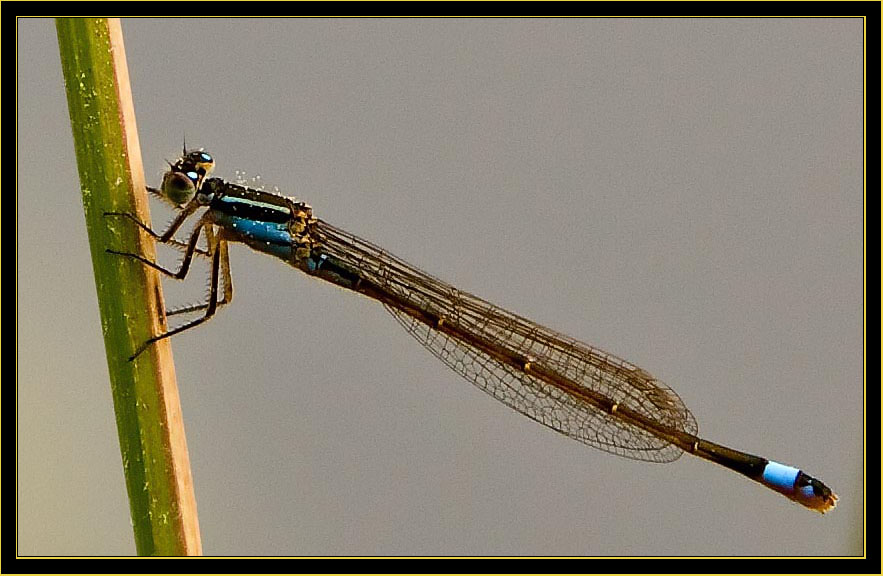
|
|
Fitz knew exactly where he wished to go and after a ten-minute ride we arrived next to a lagoon with some low vegetation next to the water. The cart was parallel to the water's edge as
he started pointing out the subjects of our search - Ramburs Forktails (Ischnura ramburii) & Fragile Forktails (Ischnura posita). I looked and looked again as he pointed... ‘Are you kidding me Fitz?’... These damselflies
are some of the smallest of all – fully grown at about an inch or less. I could tell immediately that a few equipment changes would be required to capture these creatures through the lens.
Ramburs Forktail group; female at top, male below - Canon 40d, 1/250 second, f/3.5 @ ISO 400; 70~200 f/2.8L with 37mm extension
|
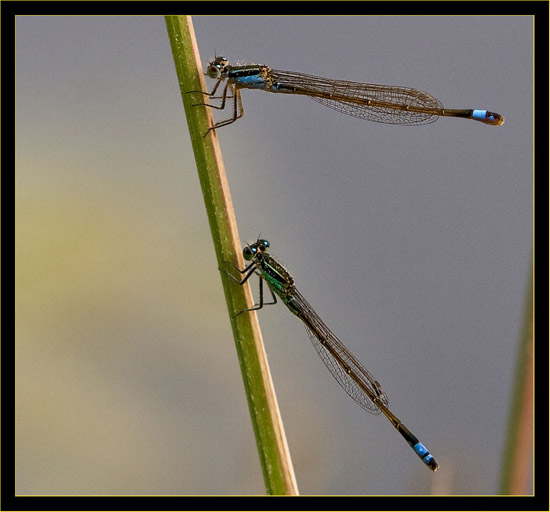
|
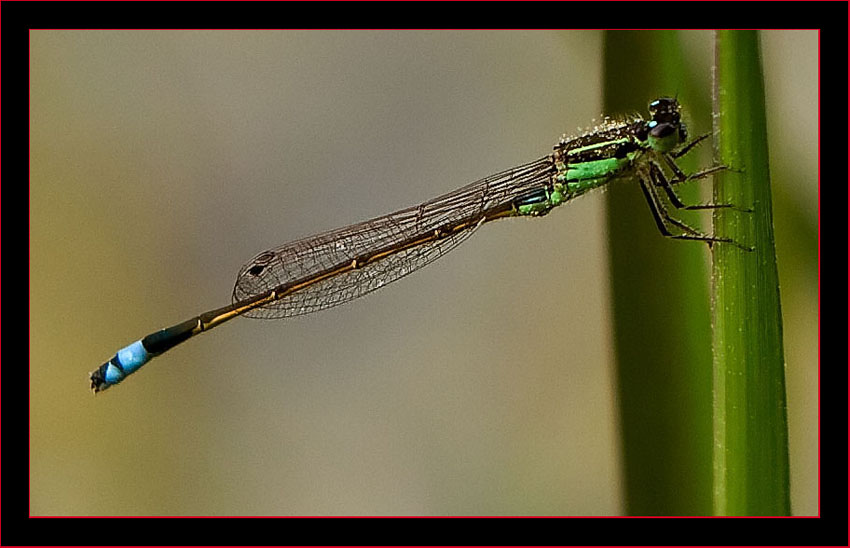
|
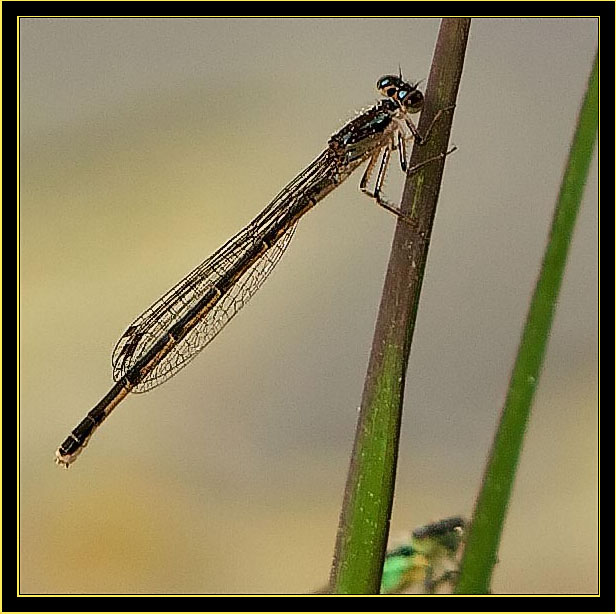
|
Although I understood how to go about photographing these tiny subjects implementing a system to do so took a few minutes. The gnats didn’t mind how long it took to get ready and added a bit of misery to the occasion. I
set up my 70~200 f/2.8L Image Stabilized zoom lens with 37 millimeters of extension tubes (a 12 and 25mm). This allows the lens to focus much closer than would normally be the case at 4.6 feet although you lose the ability
to focus at infinity - not a problem with this type of imaging. With the extension tubes mounted this distance
became around 18 to 36 inches although I don’t recall exactly what the working distance of my system was plus it varied as the subjects moved about in their daily routine.
Fitz and Doug were both using the Canon 40d by this time and had explored using the live view function. Fitz quickly reviewed this with me. This was the first trial of the magnified view it provided for me and
I was impressed. Lowering your tripod and sitting on a stool makes photographing these subjects much easier and when using live view in manual focus I found it almost a necessity. You can establish a shoot
zone and attempt to photograph anything that comes within focus range.
As you view these shots Keep in mind these damselflies are noted as being .08 to 1.1 inches in length as adults - they are tiny... |
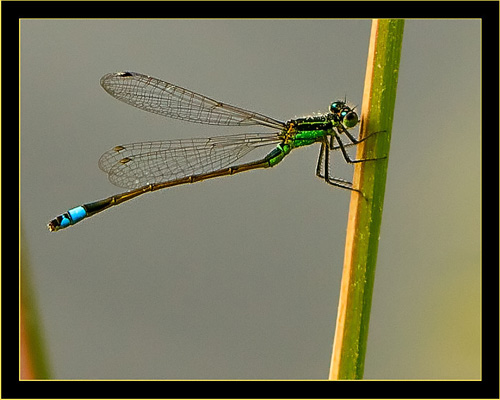
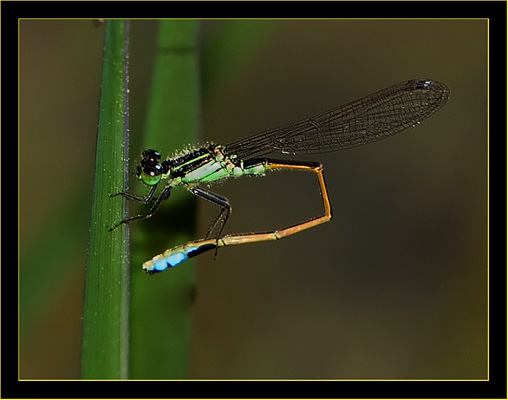
|
|
In our various golf cart expeditions around the island I usually had my 400mm lens mounted for any bird imaging possibilities. I have learned to be at the ready as you never know what may streak
by or be observed hanging out by a lagoon. I’ve stated before that I will photograph anything that catches my eye from a mundane subject hopefully viewed in a refreshing way to something unusual.
Getting out and looking around is the key and Skidaway Island offers a great deal of possibilities.
Find below a few common views taken while Fitz and I were ‘patrolling’.
One of the many lagoon turltes
|
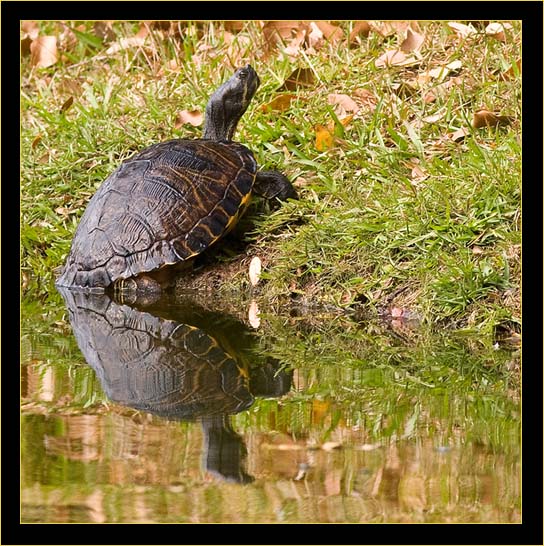
|
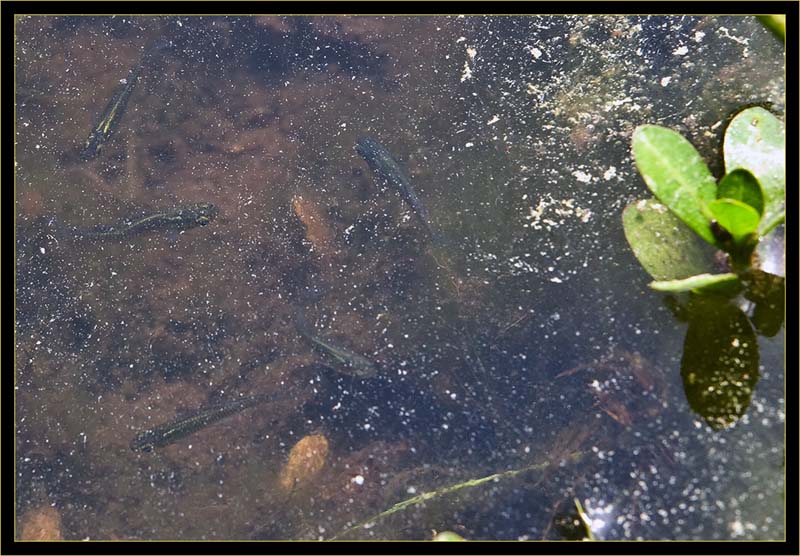
|
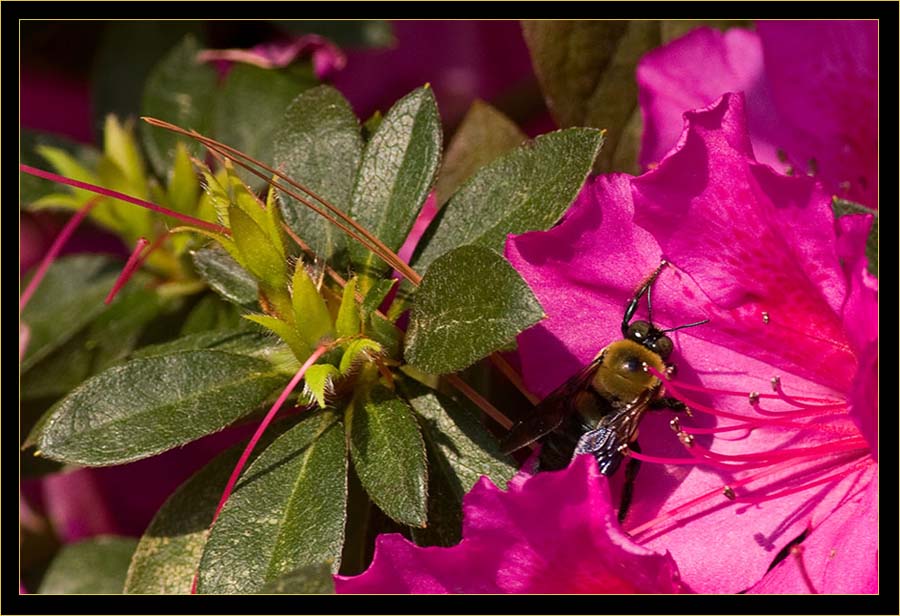
|
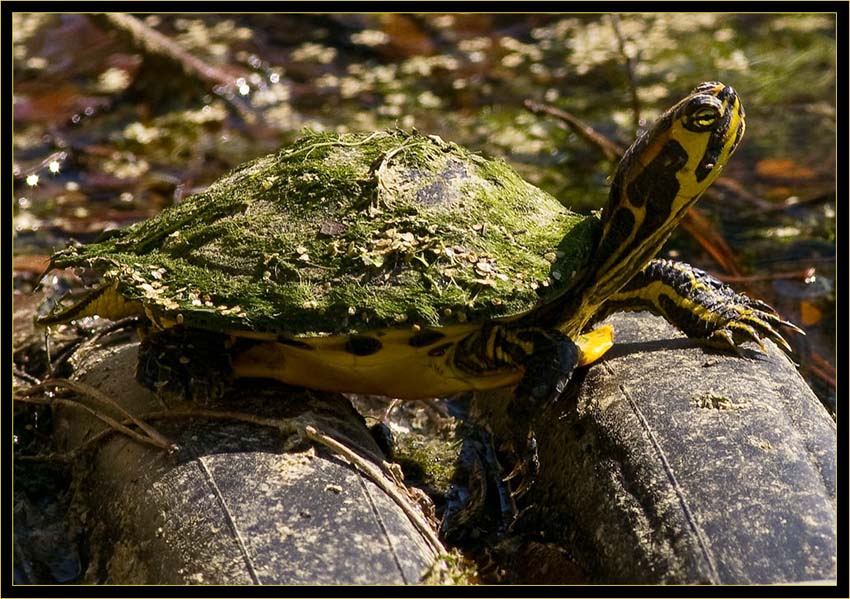
|
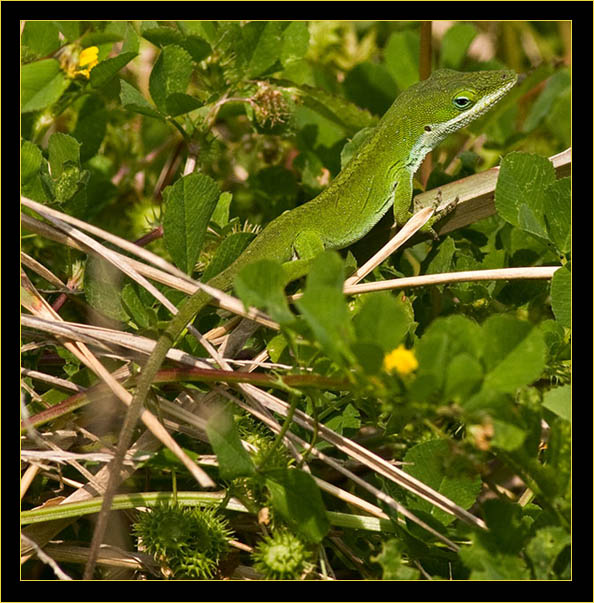
|
Another prominent birding spot which I learned was a favorite for Fitz to investigate for insects was the ‘Sparrow Field’, not far from my friend Bill’s residence. I conducted many visits to the
lagoons around this area because there’s about a bazillion wading birds that winter here and many roost quite near this field in the lagoon trees. Although the species variety doesn’t differ a
great deal it’s a good place to practice wing shots around dusk. The field had been mowed short and the local birders have constructed a series of artificial gourd houses. I learned from Fitz and
Doug that this was to draw in the Purple Martins during nesting season and now was their time – they were in residence. This effort was intriguing and this was the first time I’d heard about
Beth Ross. Beth was monitoring the Purple Martin endeavor and had asked for information and photographs anyone may obtain while observing the martins. We were all pleased to comply...
At left - a Carolina Anole (Anolis carolinensis), aka Green Anole. It is sometimes referred to as the American Chameleon due to its ability to change color; however, it is not a true chameleon from what I understand. I'm not certain about the color range of these lizards, but I've only observed them in the green indicated at left and brown. |
A visit to the Sparrow Field
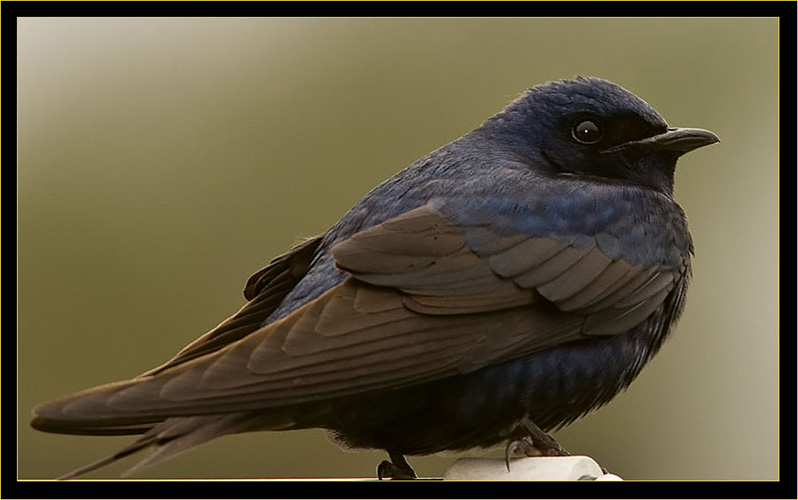
|
|
Doug, Fitz and I photographed the martins on multiple occasions in March into early April taking advantage of different lighting conditions to learn what worked most advantageously on these dark birds. In direct sunlight
they appeared black with little detail and it wasn’t always a simple matter to obtain a good exposure. The birds would allow a reasonably close approach, certainly close enough with the focal lengths lenses I was using,
but you don’t wish to be bothersome or stress the birds. On at least one of these sessions, an afternoon with no breeze whatsoever, the gnats were out in force to the point we abandoned the effort and ran for home.
A closer look at a female martin - Canon 5d/600mm lens extended to 840mm on tripod, 1/400 second, f/8 @ ISO 400
|

|



|

|
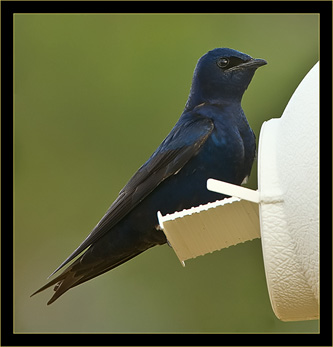
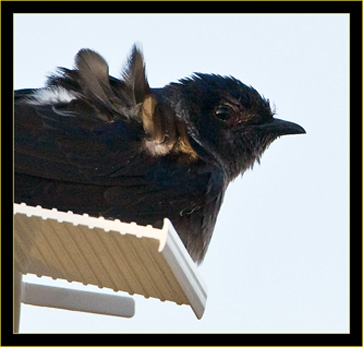

|

|
By the end of March I received a call from Hunt's Camera in Maine that a Canon 1Ds Mark III had arrived and I was next on their list to receive this camera. I wished to get this in hand while still in Georgia as the summer-like weather (by my standard anyway)
would allow a trial period in a much warmer climate than back home. A few of the martin shots noted above were taken with the 1Ds, Canon's latest flagship model. The martin group also exhibits some images taken with the 600mm f/L
lens, which arrived during this timeframe as a replacement for the 500mm lost at Tybee Island. Anything noted as shot at 840mm was with this lens.
As April was looming my work in the area was completeing and the return drive to Maine was being planned. I still had a few opportunities to get out and shoot and planned to do so.
A pair of Purple Martins at home - Canon 5d/600mm lens extended to 840mm on tripod, 1/200 second, f/8 @ ISO 400 |
|
Fitz and I did the golf cart 'patrol' when we could get together in my remaining time, sometimes joined by Doug. All our time wasn’t spent in the field though; often we met and discussed photography in general and enhancing methods for different types of images.
Great Blue Heron on the nature trail in low-light - Canon 5d/600mm lens extended to 840mm on tripod, 1/40 second, f/5.6 @ ISO 640
|
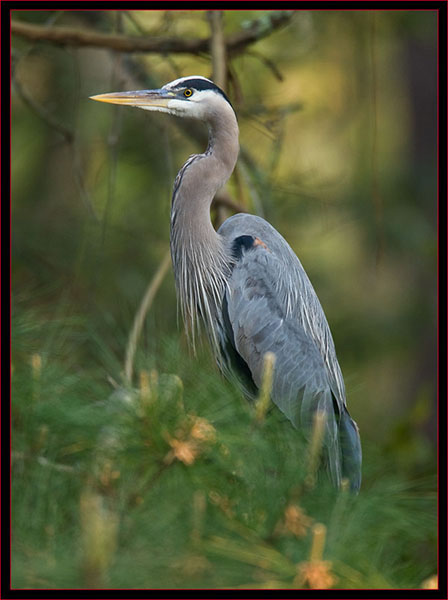
|
Hanging with the Bug Man on the Nature Trail...
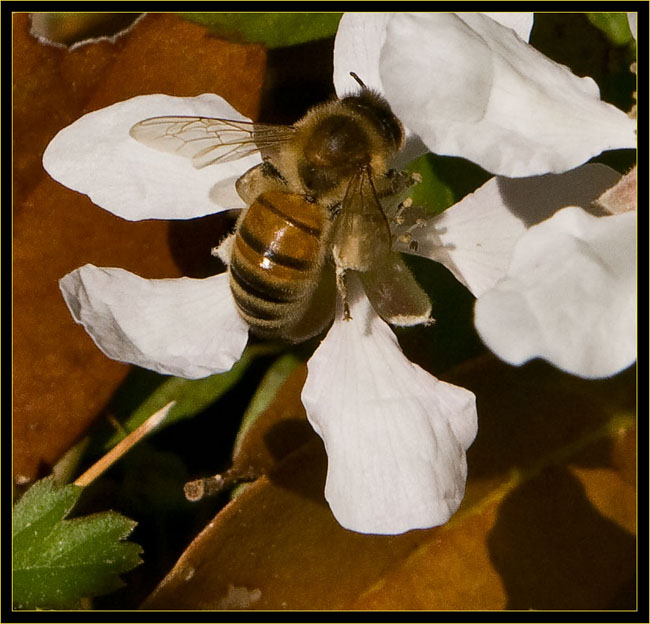
|
One of our trips before I left Georgia was to the Nature Trail, a path through the woods that is preened and cared for by local volunteers for the enjoyment of all in The Landings. Fitz is one of these volunteers so was quite familiar on where he’d liked to be along the trail at any given time of day to seek out his favorite subjects. On this day we parked the cart, nothing but foot traffic is allowed on the trail and hiked in. Traveling by golf cart was problematic enough for my equipment choices, now we were on foot which relegates everything to being hand carried. I don’t mind this of course and do it all the time, but it’s a difficult choice to decide if you wish to go with long focal lengths for birds or short for more minute subjects. In my system it’s not just lens choices but also the type of mounting device or tripod selection. We kept an eye out for the Barred Owls recently spotted along the way and set up along the path to photograph butterflies. I'll post a few shots from this session below... |
|
Fitz was well informed about what was flying and available to image. He also kept me straight on identifications where necessary once the files were processed. We found several examples of the Horace’s Duskywing, a member of the subfamily Spread-wing Skippers.
If photographing these critters is something you’re interested in besides learning when they fly you’ll also need to investigate what types of plants attract your subjects allowing you to monitor these areas. Fitz has spent a good deal of time doing just that.
A female Horace's Duskywing - Canon 40d/70~200mm f/2.8L lens on tripod, 1/800 second, f/7 @ ISO 400
|
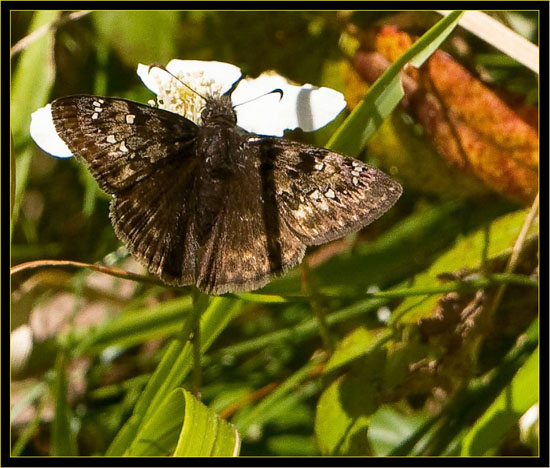
|
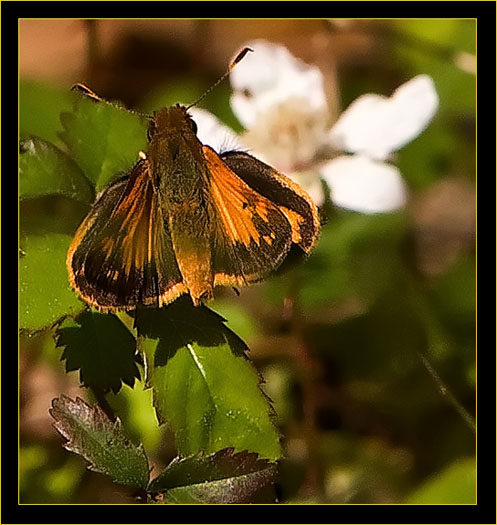
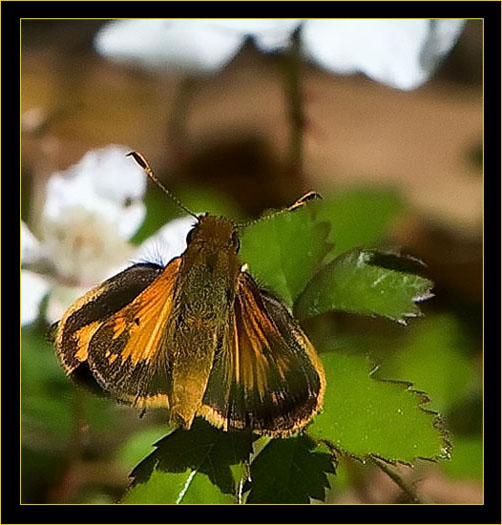
|
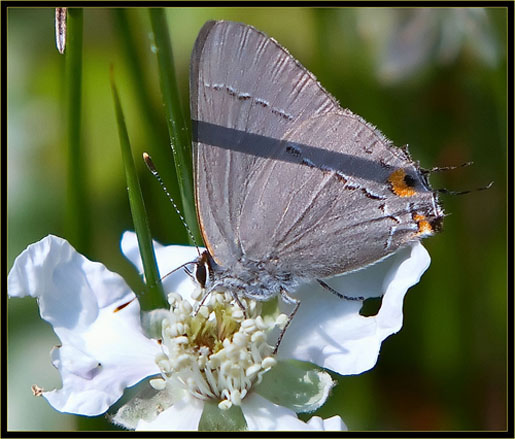
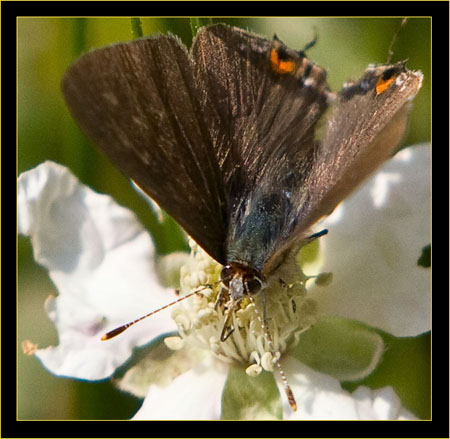
|
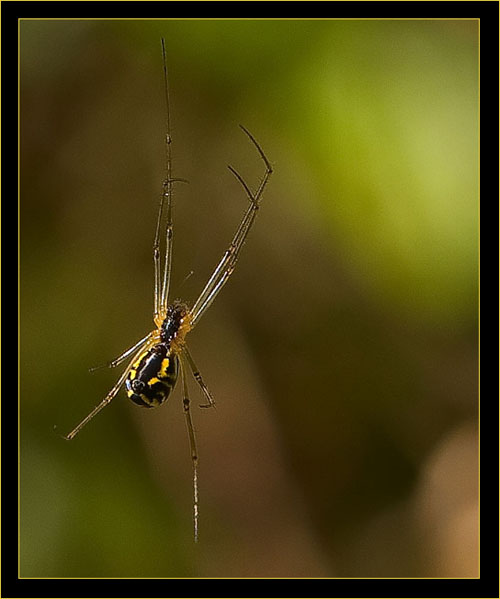
|
I’m not certain what species this tiny arachnid is… While set up in a shoot zone and seated at the camera I noticed this spider moving across my field of view horizontally. I watched this creature for quite some time and took a series of shots.
Probably this is a familiar species in the south but one I wasn't familiar with… If anyone viewing this knows what it is please drop me a line so I’ll know as well.
Canon 40d/70~200mm F/2.8L lens on tripod, 1/500 second at f/5.6, ISO 400 |
|
April commenced and my time in Georgia was at an end. It had been a successful winter for me photographically and I had no problem with returning to enjoy the comforts of home. The 1Ds Mark III camera had arrived and Fitz and I were out one afternoon and I was using the 1Ds in live view
on some of his favorite subjects. However, the breeze was up and I was getting frustrated quickly. Even the slightest breeze is detrimental to achieving critical focus on these small subjects. I indicated we should simply give it up as a failed effort and not long afterwards we did,
although the breeze will save you from the gnats so it wasn’t all bad… When I downloaded my media card I was really surprised with the results – not bad at all and much better than anticipated…
The image at right is the twenty-first exposure captured with my 1Ds camera and is a bit unusual. At first even the Bug Man was stumped about what this was… After some investigation we learned why. This is a Ramburs Forktail (damselfly) in the teneral stage, newly emerged from the pupae stage and lacking adult coloration. Fitz stated it was unusual to see one of this species perched on a tree and he believed this was the Ramburs first stop upon emerging from the exoskeleton. We’d photographed a new born… Ramburs Forktail in teneral stage - Canon 1Ds/70~200mm f/2.8L lens on tripod, 1/200 second, f/2.8 @ ISO 400
|

|
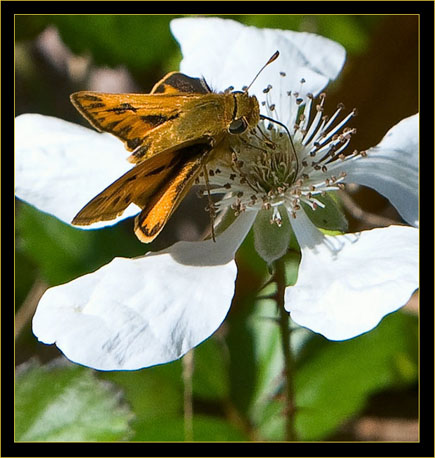
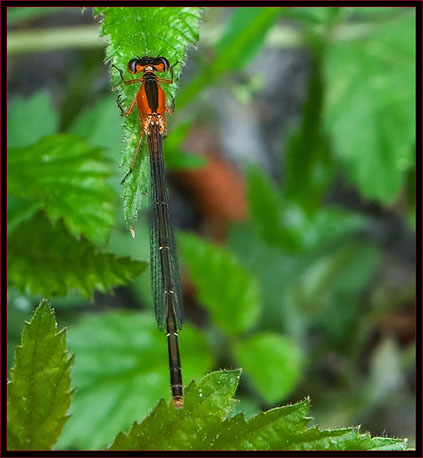
|
I planned to be back in the area in June and intended to drive so I could return with all my photographic equipment…

September 2008